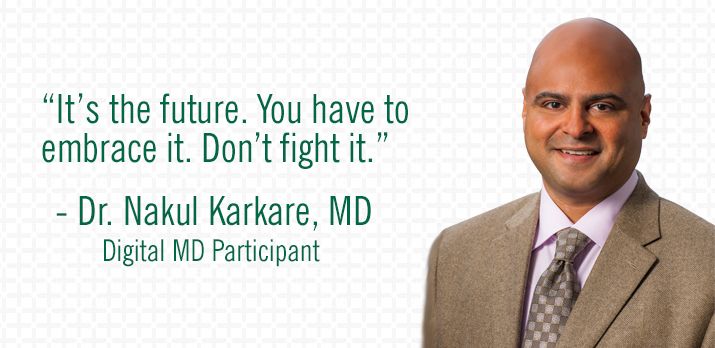Apparently, no second opinion is needed on the benefits of technology in health care.
Doctors and patients agree the tremendous advances in technology have a lot to do with improvements in medical care.
Tracking your blood sugar can be done on a smartphone. There soon may be apps and other accessories capable of checking your cholesterol or monitoring your heart’s electrical activity without stepping into a doctor’s office.
Researchers based their findings on a first of its kind survey which sought the opinions of a pool of healthcare professionals and patients on a range of “issues related to the evolution of medical care,” according to a WebMD Health News article.
The WebMD/Medscape Digital Technology Survey quizzed more than 1,100 patients and 1,400 healthcare professionals, including 827 doctors, about their views on topics such as the use of smartphones to help in the diagnostic process, being concise and clear on what a procedure costs, the right to review medical records, radiation risks from imaging tests, and genetic testing.
Doctors and patients found common ground on many of the issues.
In the article, Ed Topol, a physician and editor-in-chief of WebMD’s Medscape site, described technology in medicine as “democratizing all aspects of the doctor’s visit.”
With the use of smartphones and other digital devices, it could be possible in the not-so-distant future for a doctor to track a patient’s condition prior to an office visit, or for a patient to show up at a checkup with a test result.
The advantages are immense in a paperless medical environment.
The Survey Says
Health professionals and patients who participated in the study embraced technology and its ability to enhance medical care.
According to the survey, 84% of patients and 69% of doctors said they embraced technology to help improve the diagnostic process.
The majority of patients (64%) and doctors (63%) found the smartphone to be a useful tool for tracking the body’s blood sugar.
But less than half of both groups – 40% of patients and 17% of doctors – believed it was a good idea to use technology to identify health concerns without seeing a doctor.
The doctors and patients shared other similar views on medical technology. Both groups overwhelmingly agreed nearly 100% that clear, concise information is needed about what a medical procedure would cost. Both groups supported more patient access to fees and prices charged by healthcare providers.
The findings were similar in the area of genetic testing. Both groups supported the use of technology to diagnose problems early.
The survey also highlighted issues where doctors and patients differ.
While there was mutual agreement over a patient’s right to review medical records, doctors and patients were split on who should own the medical record. Fifty-four percent of patients believed they owned their medical records, while 39% of doctors said physicians own the medical records they keep on file.
Patients also expressed less concern than doctors about the risks of radiation exposure from imaging tests such as X-rays, mammograms and angiograms. According to the survey, only 19% of patients said they were very concerned about radiation risks, while 32% of physicians were very concerned.
Physician Nakul Karkare is among several doctors whose work in digital medicine is being profiled in a series of articles to address the issue from the perspective of healthcare professionals. The Digital MD series will profile doctors who are using health IT in their private practices. In the series, the physicians outline its benefits, address concerns, and answer questions on how to convert to a digitalized practice.
Karkare said he believes technology is vital to medical care in the 21st century. He touts technology’s role in improving processes, making doctor visit wait times shorter, creating fewer errors and improving overall patient care.
“It is the natural evolution of the way medicine will be practiced,” Karkare said.
He did not like messy paper charts, which took up space and were neither efficient nor effective for timely communication between healthcare providers, including doctors, managed care providers, hospitals and others.
Karkare said he initially went through a period he described as “teething,” when he was putting together specific work templates and developing a work flow. It took about two or three weeks to adapt to the new digitalized system and learn new processes.
Going paperless has allowed Karkare to provide better patient care and lead a more efficient operation.
“It has allowed me to maintain several offices where everyone can access data because my electronic medical records is cloud based,” Karkare said.
All documents, including insurance cards, are scanned into the EMR and all the notes get sent to the referring physician electronically, he added.
Karkare offered a piece of advice for a healthcare professional interested in health IT.
“Spend the extra time and effort in setting up designer practice modules in the initial phase,” Karkare said, “and make sure that front desk staff and other physician extenders are well trained with the use of EMR.”
Health IT is the future, Karkare added. “You have to embrace it. Don’t fight it.”




